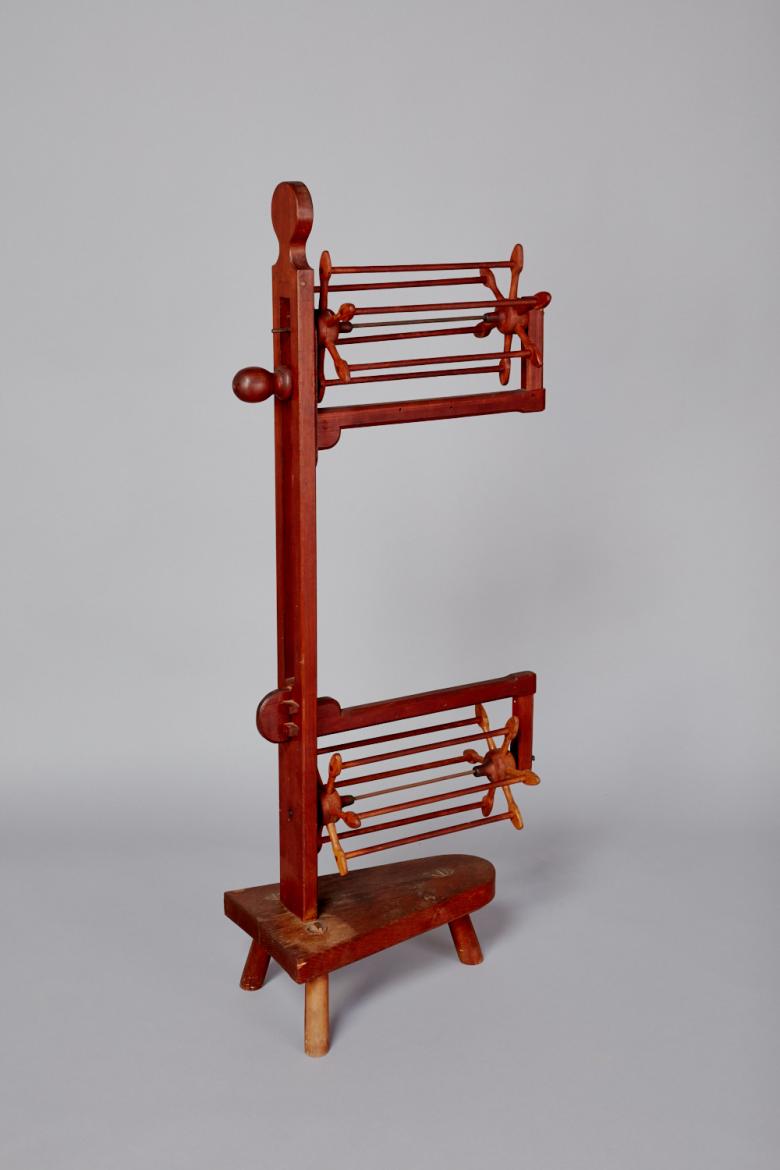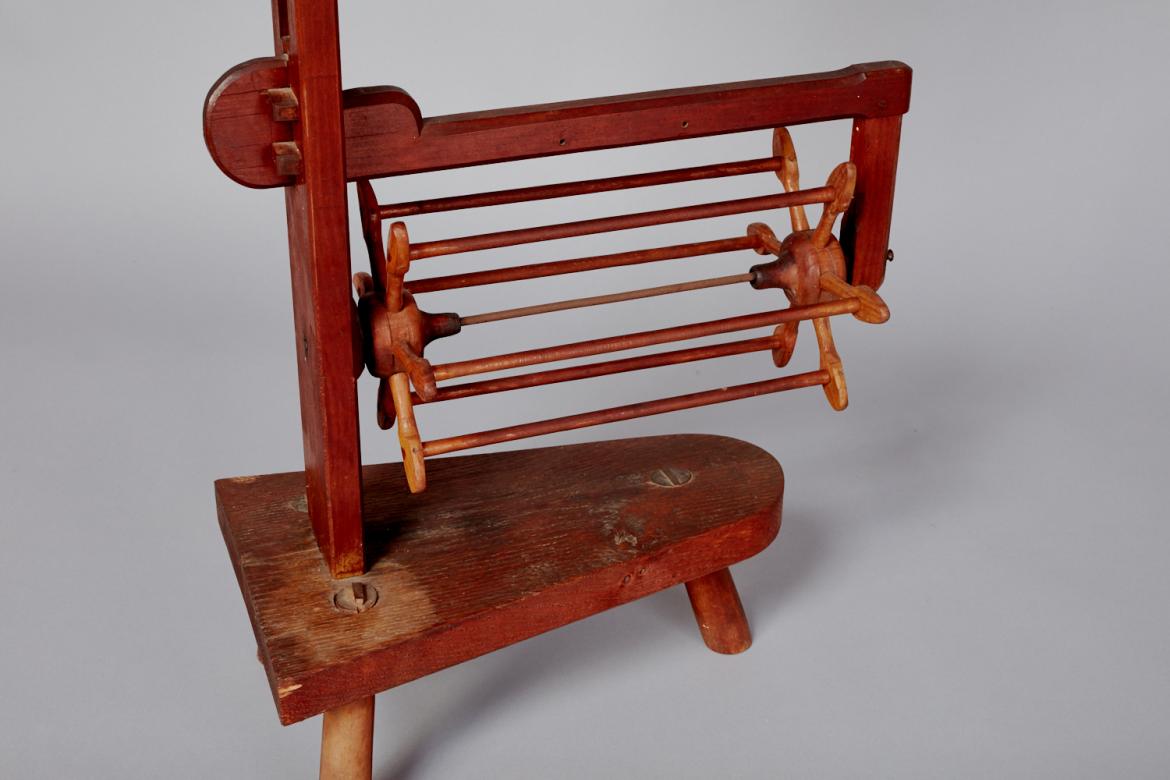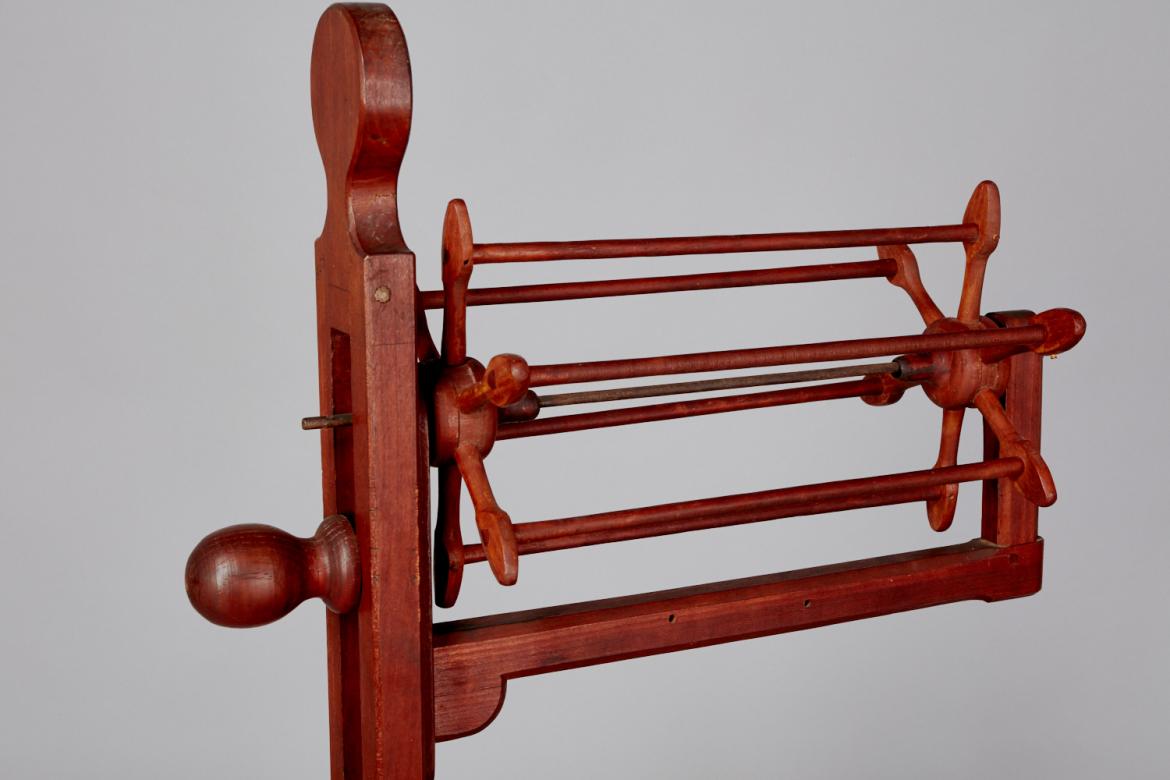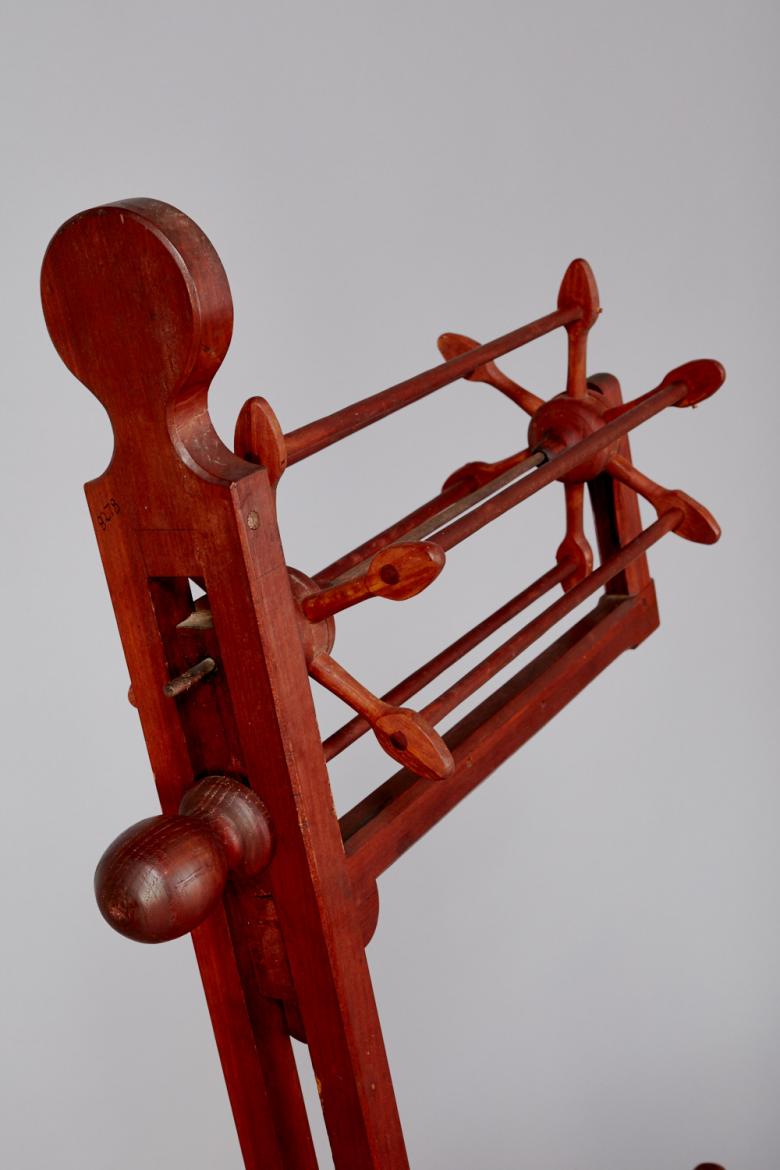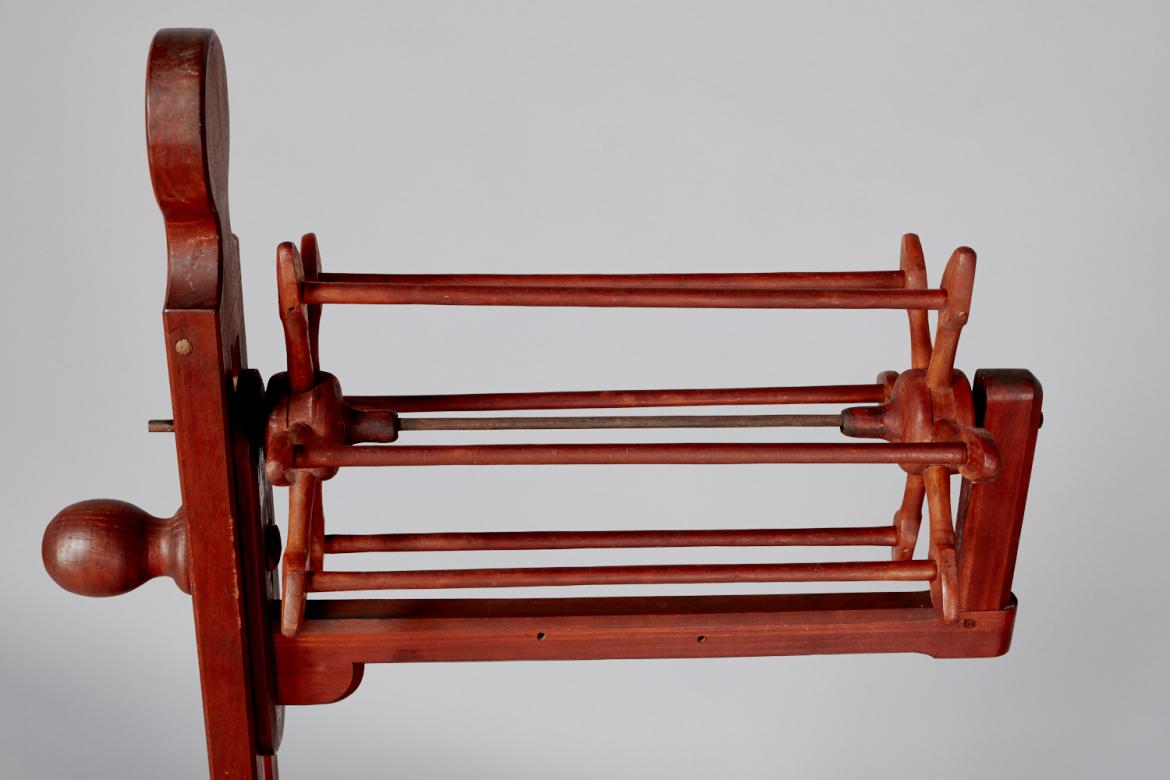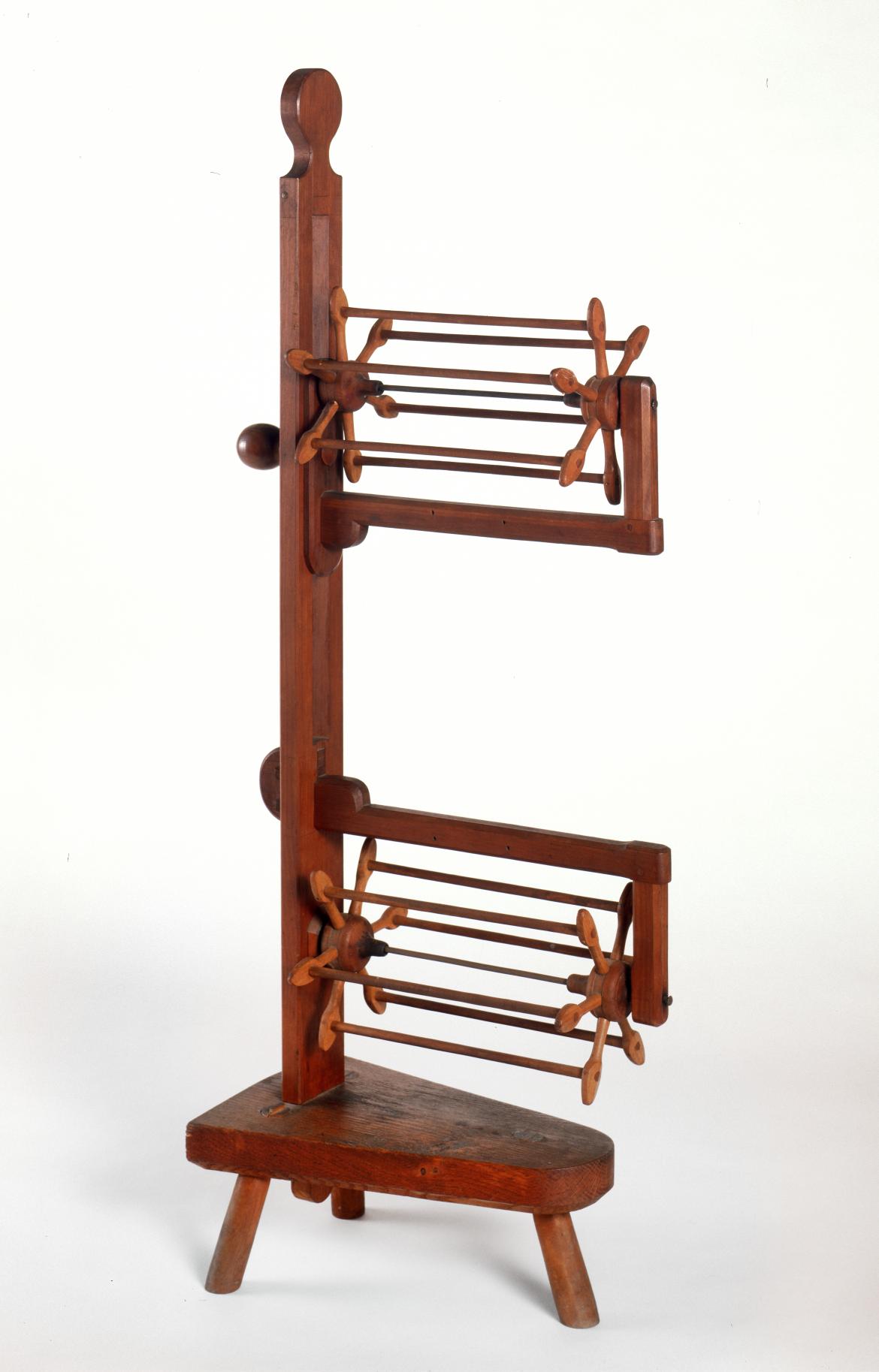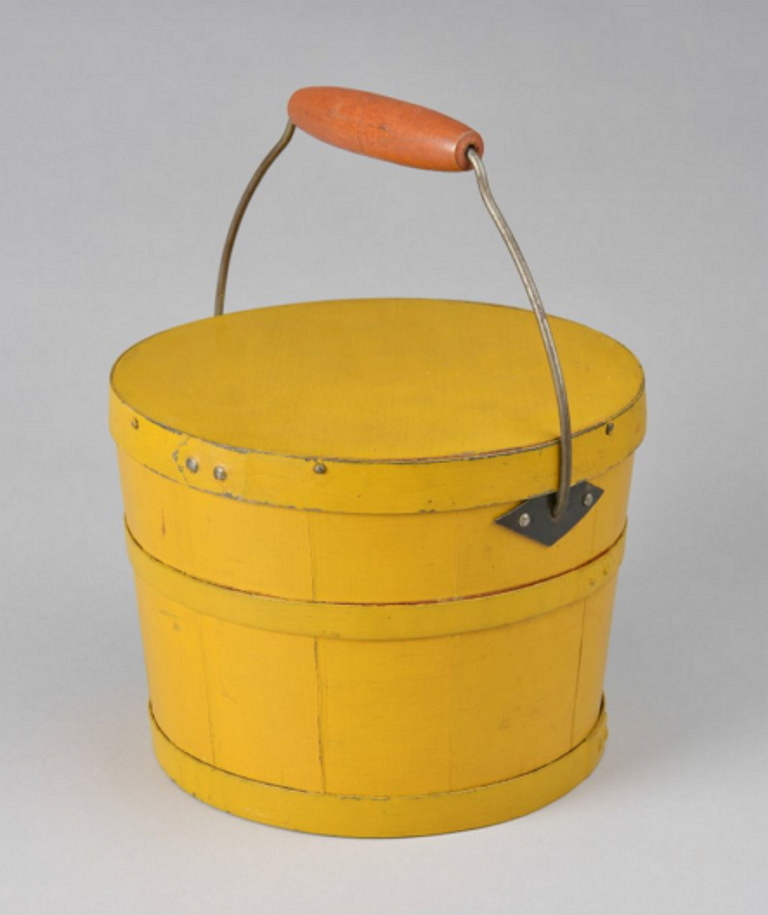Swift
Two-wheel, squirrel cage wool swift, Hancock, MA
Description
Two-reel, squirrel-cage swift made of cherry, oak, ash, and butternut, with iron shafts. Triangular base, rounded at one end, measuring 15" x 9 1/4" to 4 7/8". Three legs support the base. 39" high vertical beam with rounded top at the back. Two extending arms set into the back beam, with the lower one 10 3/8" from the bottom and extending out 15". A revolving reel about 12 1/2" long with six wooden bars attached to this arm. The upper arm similar to the lower one, with a revolving reel attached, but the top reel is adjustable in height via a piece of wood with a large knob at the back.
Notes
Swifts are among the broad range of equipment needed to process wool from its raw state into a finished garment or article. This squirrel-cage swift is a specialized form, and it functions differently than other varieties of swifts. After wool has been carded and spun, it is wound around a swift, niddy-noddy, or clock reel to measure out a specific length of yarn, called a skein. A squirrel-cage swift wraps the skein vertically, unlike regular swifts, and employs two reels, unlike clock reels. Squirrel-cage swifts are used in the drying process of wool yarn. A skein of wool is washed and then placed on a squirrel-cage swift to dry. The user could adjust the reels vertically so as to pull the skein taut. Gravity pulls water towards the bottom of the skein, so it would be rotated on the "cages" several times. Rotating the skein would ensure that it dried quickly and evenly. Processing wool and the manufacture of woolen articles contributed to the income of eastern Shaker communities. Shakers built and used their own carding mills, but they sold wool to the world in several different forms. The Mount Lebanon Shakers carried unprocessed wool to Pittsfield for sale, as revealed by entries in the diary of Sally Bushnell of the North Family at Mount Lebanon: "Clawson & Levi go to Pittsfield to carry the wool to sell." [1] Several Shaker communities operated their own carding mills. The Enfield, New Hampshire Shakers paid non-Believers to operate their carding mill: "The Church Family own a grist mill and a carding machine, which is tended by the world."[2] When communities could not produce enough wool for themselves, to make sale articles, or it was uneconomical, the Shakers bought quantities of wool from outside factories. [1] Journal of Sally Bushnell, Second Volume. Entry dated July 3, 1852, p. 126. Emma B. King Library, Shaker Museum and Library, Old Chatham, NY. [2] Sarah Ann Lewis Travel Diary. Entry dated September 24, 1849, p. 82. Emma B. King Library, Shaker Museum and Library, Old Chatham, NY, #10483.
Massachusetts Hancock



